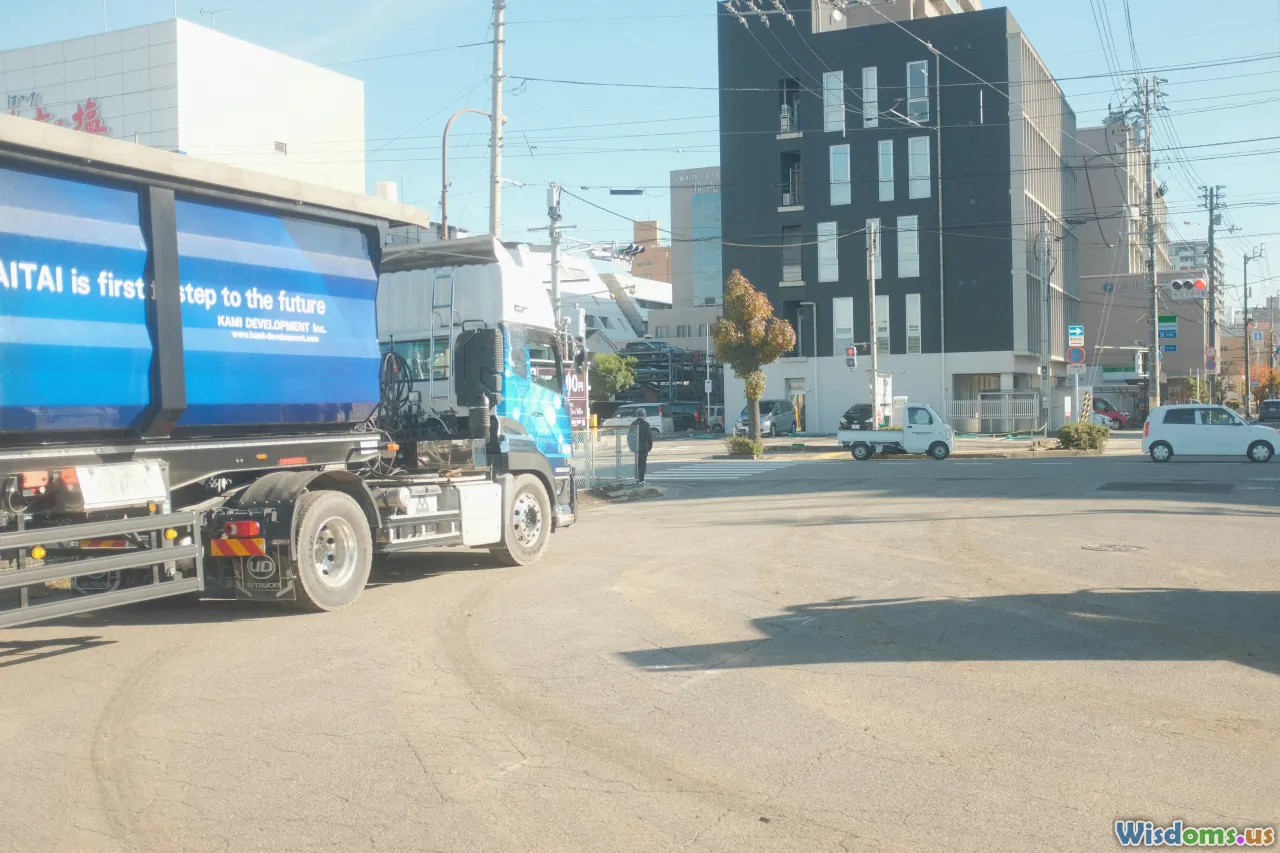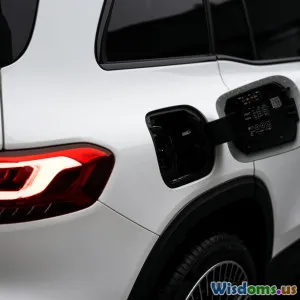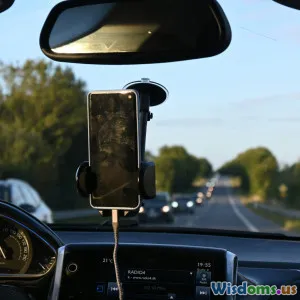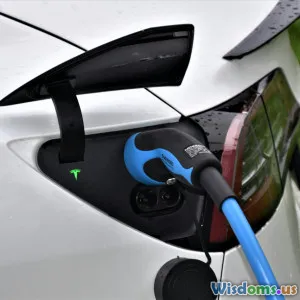Comparing the Top Fleet Management Platforms in 2024
17 min read A comparative review of leading fleet management platforms in 2024, highlighting features, benefits, and key considerations for businesses. (0 Reviews)Comparing the Top Fleet Management Platforms in 2024
Managing a fleet has become a high-tech endeavor as businesses demand increased productivity, safety, and efficiency. With the rise of logistics, delivery, and transportation services, countless fleet management software platforms offer features ranging from advanced telematics to predictive analytics. But which platforms will truly steer your business ahead in 2024? Let’s look at the leaders and see how they stack up, allowing you to choose with clarity and confidence.
Fleet Management in 2024: What Matters Most
While the core mission of fleet management has not changed—monitoring, maintaining, and optimizing vehicles—the available tools and technology have advanced rapidly. In 2024, the best platforms do more than just track vehicles; they help businesses adapt to regulatory pressure, reduce costs, improve driver behavior, and seamlessly integrate with broader operations like HR, safety, and maintenance.
Key priorities for today’s fleets include:
- Real-time GPS tracking & routing: Ensuring vehicles are in the right place at the right time.
- Driver safety & compliance: Monitoring driver habits and ensuring adherence to regulations (like ELD).
- Predictive maintenance: Preventing breakdowns using data analytics.
- Fuel management and environmental impact: Reducing unnecessary consumption and tracking CO₂ emissions.
- Ability to scale and integrate: Fitting into existing IT ecosystems, even as fleets grow or diversify.
Example: Some platforms now offer AI-enabled video telematics, pairing live footage with real-time analytics to both assess events and coach drivers. This was nearly unthinkable just a few years ago, revealing how much expectations have shifted.
Geotab: Data-Driven, Highly Integrable

Geotab remains a titan in the fleet management space, serving customers on every continent. It sets itself apart with its modular, open platform—Geotab GO devices collect exhaustive data, which is then processed in the MyGeotab dashboard, offering in-depth analytics fonts for every conceivable fleet metric.
Why Geotab Stands Out:
- Open Marketplace: Geotab’s extensible ecosystem offers over 150 third-party integrations—if your fleet needs to blend with business systems (payroll, ERP, dispatch platforms), Geotab is often a prime choice.
- Data Granularity: Real-time, detailed insights down to engine faults, tire pressure, and even seatbelt usage.
- Compliance Tools: Advanced support for region-specific regulations (FMCSA ELD, DVIR, IFTA).
- Predictive Maintenance: AI-driven maintenance alerts—studies indicate up to a 20% drop in unscheduled repairs after implementation.
Notable Example: Geotab partnered with the City of Winnipeg to reduce fleet accidents. After implementing driver scorecards and coaching tools, the city’s preventable collision rate dropped by 36% in one year.
Considerations: Geotab can be overwhelming for smaller fleets or those with basic requirements, given its depth and configuration options.
Samsara: End-to-End Simplicity, Modern User Experience

Where Geotab dazzles with technical depth, Samsara fiats itself as a modern, intuitive fleet solution for businesses seeking end-to-end connectivity without the steep learning curve. Samsara’s cloud-native platform and sleek web and mobile apps are especially popular with mid-sized fleets and those new to telematics.
Highlights:
- All-in-One Platform: Real-time vehicle tracking, driver safety analytics, maintenance, and compliance—in a single pane of glass.
- Video Telematics: Dashcams with AI-driven incident detection (distracted driving, hard braking) and customizable safety coaching.
- Fleet-Wide Alerts: Immediate notification for unauthorized activity, geofence violations, and unsafe driving events.
- Integrated ELD: Plug-and-play solutions streamline Hours of Service compliance.
For Example: USA-based distribution company ValuTrak credited Samsara’s driver coaching for reducing harsh driving events by 50% in just six months.
Considerations: Although more user-friendly, Samsara offers fewer advanced customization or integration features compared to Geotab or Verizon Connect. Pricing is tiered, which means paying extra for premium features like in-cab video.
Verizon Connect: Enterprise Scale Meets Reliability

Verizon Connect builds on its longstanding communications pedigree, combining GPS tracking, mobile workforce management, and logistics planning under one umbrella. Its robust enterprise features suit larger fleets with sophisticated dispatch, compliance, and reporting needs.
Defining Strengths:
- Comprehensive Coverage: GPS tracking, ELD compliance, asset management, dispatch.
- Workforce Management: Integrates driver timecards, automated dispatch, and message systems.
- Rich Reporting: Custom dashboards—historical data, fuel usage, operational costs.
- Scalability: Serving everyone from local service businesses to multinational logistics providers.
In Action: Formerly a set of separate brands (Fleetmatics, Telogis, Reveal), Verizon Connect amalgamates advanced scheduling (route planning, dynamic jobs assignment), which Big Box retailer MetroMall used to reduce idle times across a 300-truck fleet by 18%.
Considerations: The enterprise focus can make Verizon Connect less approachable for small business fleets. Some users find initial onboarding more complex compared to plug-and-play competitors.
Fleet Complete: Flexibility for Mixed Asset Fleets

Fleet Complete promotes a flexible platform designed for diverse, mixed-asset fleets—think cars, light trucks, ATVs, trailers, and even heavy equipment, all under a single solution. The Adaptive Edge series hardware works with various vehicle types, paired with an agile web portal.
Why Choose Fleet Complete:
- Versatile Tracking: Works for non-vehicle assets (generators, trailers, containers), helping safeguard investment in all fleet-related assets.
- Easy Customization: Tweaks to workflows, reporting, and tracking based on unique business needs.
- Safety and Maintenance: Automated maintenance scheduling, and safety modules.
- Global Presence: Especially strong in North America and Europe, but with growing APIs for third-party integrations.
A Specific Use Case: A Canadian utility company rolled out Fleet Complete across 1,400 assets (mix of bucket trucks, pickups, and field tools), reducing lost equipment incidents by 65% year-over-year.
Considerations: It lacks the extreme data granularity of Geotab, but for heterogeneous fleets, it is hard to match for all-in-one convenience.
Motive (formerly KeepTruckin): AI Video and Safety at An Affordable Price

Motive (the platform formerly called KeepTruckin) focuses on affordable fleet management for safety-conscious operators, particularly in the North American long-haul segment, and emphasizes real-time AI-driven video telematics.
Best Features:
- AI Fleet Dashcams: Real-time in-cab monitoring, auto-detecting events like cellphone use, tailgating, and speeding.
- Automated Coaching: Incident-based coaching videos reduce time spent manually reviewing footage.
- ELD and Compliance-Friendly: Widely adopted for easy ELD compliance in the US and Canada.
- Cost-Effective: Plans start lower than most major competitors.
Concrete Impact: H&R Transport reported preventable incidents down 30%, and insurance rebates up, after deploying Motive’s dash cam system across its heavy-duty vehicles.
Considerations: While Motive offers solid driver safety and basic tracking, it has fewer deep integrations and advanced analytics compared with Geotab or Verizon Connect.
Quartix: For Cost-Effective, Essential Telematics
Less focused on bells and whistles, Quartix provides straightforward, web-based vehicle tracking—making it popular with SMBs and those wanting basic GPS features at an accessible price point.
Why Quartix Appeals:
- Plug-and-Play Simplicity: Easiest install and start-to-use in the industry—ideal for small service companies wanting location, reporting, and ‘bread and butter’ telematics.
- Driving Style Reports: Monitors speed, acceleration, cornering to help improve fuel consumption and safety.
- No Contract Option: Month-to-month models with no long-term lock-in, which is increasingly rare.
Example: UK plumber chain RapidFix adopted Quartix on its 15-van operation to lower average response times by 22% after better route optimization and monitoring.
Considerations: Quartix does not attempt to tackle advanced regulatory compliance or rich video analytics. For larger or regulated fleets, additional solutions would be necessary.
Route Optimization & Smart Routing: Beyond Vehicle Tracking

Most leading fleet platforms now bundle or offer integrated add-ons for route optimization—essential for last-mile logistics, delivery networks, or any operation where every minute behind the wheel costs more.
How Real-World Route Optimization Pays Off:
- Lower Fuel Costs: International Data Corporation estimates that fleets adopting dynamic route optimization saved an average of 15% on annual fuel expenditures.
- Better Customer Experience: More predictable ETAs and faster response to last-minute changes.
- Reduced Overtime: Smart route planning means less time lost to traffic or improper sequencing.
Innovators: While classic platforms like Verizon Connect or Samsara include built-in route tools, specialist tools like Routific or OptimoRoute now offer direct two-way integrations with Geotab and others—so advanced AI-driven routing can update schedules and driver apps in real time.
Actionable Take: If deliveries, pickups, or multi-stop jobs are a central part of your fleet’s business model, invest in platforms where route optimization is either native or can be tightly integrated. For single-task fleets (like long-haul freight), focus may be better placed on vehicle health and compliance.
Compliance and Environmental Reporting: Preparing for Regulation

With increasingly strict rules around electronic logs (ELD), CO₂ reporting, and environmental stewardship, 2024 platforms need strong compliance muscles to keep businesses out of regulatory hot water.
What to Look for:
- Automatic Log Management: Seamless ELD integration and electronic DVIR (Driver Vehicle Inspection Reports) capabilities are a must for North America and Europe.
- Emissions Tracking: Sustainability dashboards, automated fuel and CO₂ reports, green route suggestions.
- Real-Time Violation Alerts: Instant notification when drivers are reaching Hours of Service (HOS) limits, missing inspections, or triggering jurisdiction-specific thresholds.
Leading Examples:
- Samsara’s environmental dashboard helps users calculate fleet greenhouse gas reductions and compare the impact of alternate fuel/EV vehicles—aiding bids for government contracts requiring sustainable operations.
- Geotab partners with environmental agencies, offering digital CO₂ calculators designed for carbon reporting per vehicle or by fleet segment.
As ESG criteria become boardroom priorities, platforms that align compliance, safety, and environmental data are rapidly becoming investment-worth.
Choosing the Best Platform: Custom Fit Over Features

There’s no single best fleet management platform—only the best for your specific operation. Here’s how business leaders and fleet managers can efficiently shortlist and test providers before committing:
Match Platform Strengths to Core Needs
- Regulated long-haul trucking? Compliance-focused providers like Motive or Verizon Connect.
- City-based delivery or sales? Prioritize route management features, user-friendly dashboards, and smartphone apps (think Samsara, Quartix).
- Mixed assets or construction? Opt for broad, adaptable solutions like Fleet Complete.
- Highly technical organizations? Leverage Geotab’s integrations/APIs.
Vet Customer Support and Training
No matter how robust a system’s features, inadequate onboarding often derails ROI. Favor providers with:
- Extensive online resources and training.
- 24/7 support for incident management.
- Rapid device hardware replacement policies.
Beware Hidden Costs
Besides subscription prices, consider:
- Hardware installation/activation fees.
- Premium add-ons (video, ELD, route optimization).
- Minimum contract lengths, and early cancellation penalties.
Test Drive What Matters Most
Whenever possible, ask for a live demo tailored to your business workflow, or launch a pilot program with a subset of your fleet. User interface and support realism often become decisive factors in real-world rollouts.
Looking Forward: The Future of Fleet Management Platforms

With artificial intelligence transforming analysis and safety, and regulatory burden only increasing, the urgency of choosing the right platform continues to grow. In 2024, the smartest fleets are those agile enough to adapt—leveraging fleet data for both tactical wins (fuel, risk, maintenance savings) and long-term sustainability.
From Geotab’s deep integrations to Samsara’s simplicity, Motive’s AI video, and Route Optimization’s persistent edge, the options are better than ever. Whether you operate a fleet of 20 service vans, or orchestrate thousands of assets worldwide, a thoughtful, data-driven selection is the surest route to a smoother, safer, and more profitable future.
Rate the Post
User Reviews
Other posts in Telematics and Fleet Management
Popular Posts















